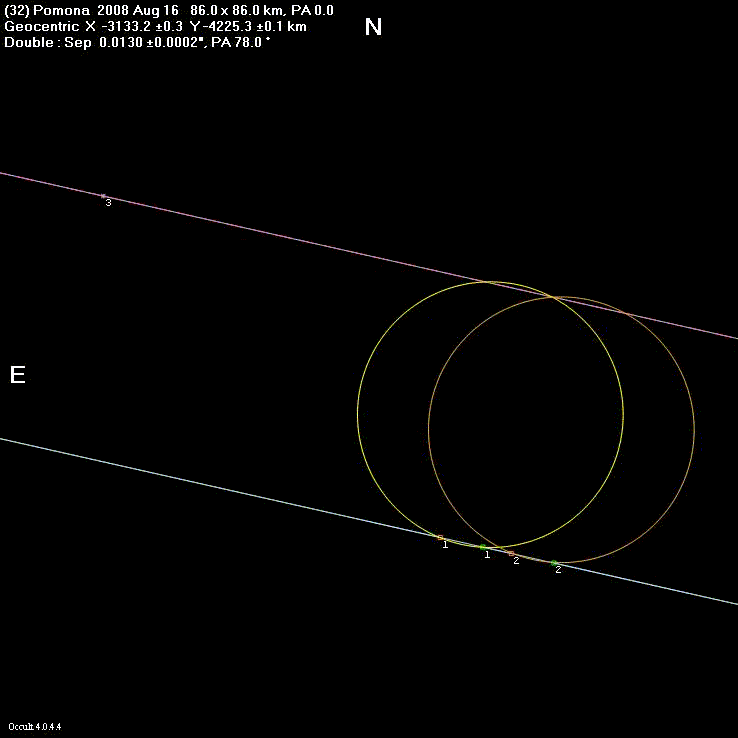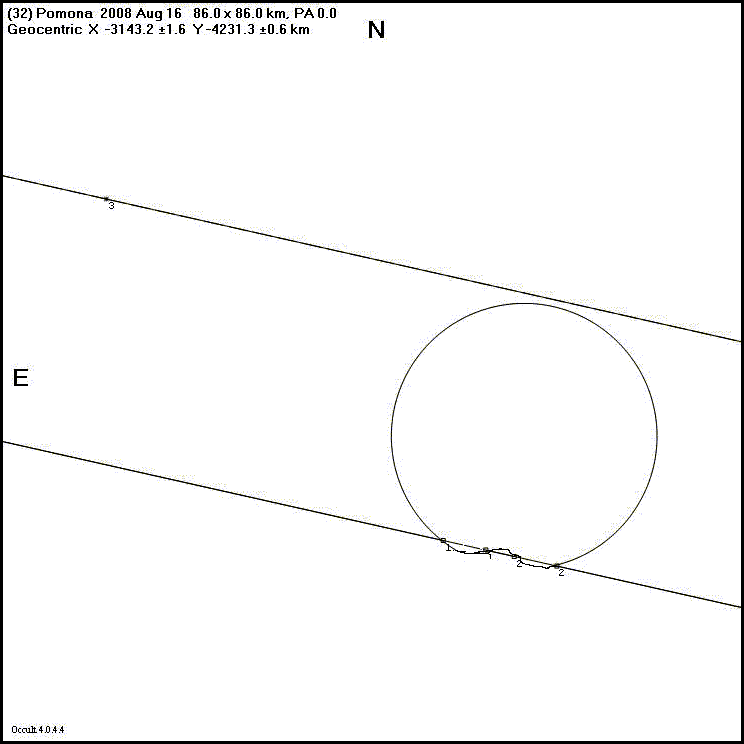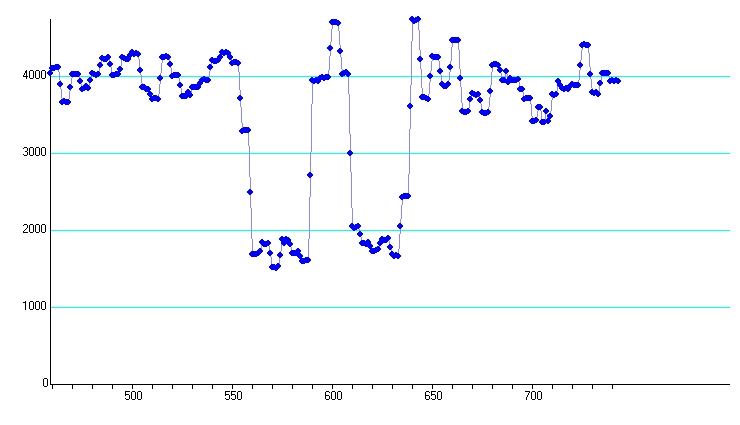|
|
Two 1.2 second occultations were recorded by Jonathan Bradshaw from the same location, using Video OSD technique.
View the updated prediction.
Observers:
1 J Bradshaw ,Samford, QLD, AU - 1st event
2 J Bradshaw ,Samford, QLD, AU - 2nd event
3(P) Prediction 10 July
Discussion:
A possible explanation is that the star (UCAC2 38196247) is a double star with a separation of about 0.013".

The circles above are plotted at the expected 86 km diameter of Pomona showing how this may be. However the equal duration of the two occultations combined with the geometry of the occultation would require the PA of the components to very closely match the direction of motion of the asteroid. This, together with the equal depth of the occultations, indicates that the double star explanation is unlikely.
The most likely explanation is that the asteroid is either binary (including a contact binary), or is a unitary asteroid with a significant concave region on its surface. This is supported by eccenricty data that can be found at Minor Planet Center. The plot would then look something like this.

With both chords being from the same point it is not possible to determine whether Jonathan was north or south of the central line of the event.
The figure below shows the lightcurve of the occultation data as analysed by Limovie software.

The video of this occultation can be viewed at: youtube.
Observational Data:
Observation details for MP (32) Pomona
By Star UCAC2 38196247
On 2008-08-16 at 16:50:42.0
_______________________________
Observer Jonathan Bradshaw
Location Samford, Queensland, Australia
Longitude +152:52:22.7
Latitude -27:21:22.8
Altitude 95 m
Datum WGS84
Telescope Dobsonian
Aperture 50 cm
Seeing Steady Clear
Timing GPS - time inserted Video with frame analysis
Disappearance 16:50:57.07
Reappearance 16:50:58.27
Disappearance 16:50:59.07
Reappearance 16:51:00.27
Comments: Two occultations for the price of one! Full moon required
12x (6 Frame) integration.
I have subtracted 120ms which is my estimate of the camera lag,
but the margin of error may be as high as +/- 120ms